
I attended Rebecca Reddin’s session on PDD day 1 (repeated on the second day) feeling ready to be entertained. After all, I like both Spanish wine and translating, although I have had some disappointing experiences with both as well. For me, one major difference is that one costs money and the other brings it in. However, many of Rebecca’s clients are Spanish winemakers, so hopefully she’s found a balance.
Once Rebecca got started, the parallels seemed fairly obvious: both Spanish wine and translation are cultural products, influenced by factors like geography, history, social function and values. Both are ancient human pursuits and thereby have respected traditions associated with them. Using corks is one good example from the wine world. Although there is an argument that corks are cheaper if you’re already near the cork-oak trees, wine corks are hallowed tradition in Spain. Spanish winemakers wouldn’t be caught dead putting wine in screw-top bottles. (Or at least not selling them in Spain; one SENSE member has seen the same Rueda with a cork at Spanish supermarkets and in a screw-top at Albert Heijn.) With both wine and translations, a good end product requires time and good raw materials, such as soil/sun/vines and in our case, the source text. There are different styles; wine has different colours, grape varieties, etc. and translations come in different types of text, voices, etc. And both entail continual decision-making along the way.
But this was just the beginning. The above points were only from one perspective, ‘looking from the inside out’, ie, from the point of view of people inside each industry. She continued her analysis ‘from the outside in’, ie, from the perspective of people not involved in the industry in question. Both winemaking and translating are opaque processes to most outsiders. Most clients aren’t aware of how the finished product happens. Clients don’t always care about this either – for most, the only question is whether they like it or not, and not necessarily why they like it. The price/quality relationship is another aspect the two share. Lastly, in both industries client trust often has to be established first.
Moving on, she mentioned changes such as market trends, social and cultural shifts, and new technical/technological developments as factors that neither field can ignore.
In closing, Rebecca offered some lessons to be learned. Firstly, speak your client’s language, not yours – our clients may not want to know about the percentage of matches or the passive voice any more than people buying wine want to know about malolactic fermentation. Secondly, your image is also something that matters to the client (see corks above), even if your product itself is something they can’t really see. Thirdly, focus on a segment of the market that you resonate with. And lastly, collaborating with others can sometimes bring about some exciting results.
So in fact the translation world and the Spanish wine world are not all that different! This was an entertaining and thought-provoking session. It ended at 12:20, which in Spain was probably time to knock off for lunch and a glass or two of wine, but for me, time to get a little more coffee before the next session…

Have you ever wondered if it is feasible to work wherever you want to? Is it even possible to travel and build your business? Maaike Leenders answered these questions on digital nomadism and more at the 2021 SENSE Professional Development Day. After working in-house for almost five years, Maaike exchanged her office for the open road and has taken every opportunity to lead a digital nomad lifestyle. Based on her personal experience, she offered practical tips for beginners interested in becoming digital nomads.
Maaike started her presentation by dispelling some common myths associated with the digital nomad. Many think of digital nomads as young, attractive people working on laptops on picturesque islands like Bali or Crete. The problem is, this beachy, chill lifestyle is often confused with the wider concept of working remotely. According to Maaike, a digital nomad is a person making a living by working outside the conventional office environment, for longer or shorter periods at a time. They use the flexibility of their online career to travel and expand their horizons. Therefore, it is certainly not a life-hack that means you never have to work again. Additionally, this lifestyle is not everyone’s cup of tea.
Now that it’s clear what digital nomadism is not, let’s look at how one can become a digital nomad. First, we must ask “why do we want to pursue this niche?” and start a career as a digital nomad. There is more to life than work: family, friends, health issues, pets, and social responsibilities. These considerations lead to other questions: ‘how much do you want/need to work?’ and ‘how much you want to travel?’ Once these questions are answered, we are almost ready to say ‘sayonara’ to our old work lifestyle. It is vital to build up a cushion of money (cash buffer) to fund your start-up costs. It is also crucial to clear any financial arrears. Outstanding debts may be the barrier to becoming a digital nomad for a long time.
Other practical tips highlighted during the talk were related to income, ergonomic workspace, and having proper internet connections. Digital nomads often work for clients outside the time zones they travel to. Hence, it is necessary to organize your time to meet client needs. Like any profession, digital nomadism has its highs and lows. Maaike highlighted that it is important to be mindful of our emotions when we are earning a living as a digital nomad. Loneliness and homesickness are common emotional setbacks. Creating your own definition of freedom and learning to say ‘no’ are important for a balanced business and personal lifestyle.
At the end of her presentation, Maaike suggested resources that offer tips on how to travel and earn at the same time. These include books, Facebook groups, and volunteer organizations. There are also some excellent platforms for homestays, such as WWOOF, WorkAway, and HelpX. These platforms offer opportunities to stay abroad without paying ridiculous amounts of money. A take-home message from Maaike’s presentation is that everything always works out, even if it never goes according to plan. And that it is often better to start small.

On Friday 27 August 2021, a group of SENSE members got together in a Zoom session to have some fun and compete in a virtual wordsmith competition. The session was facilitated by SIG & Social Events Coordinator Maaike Leenders and hosted by Jacqueline from the 100-point challenge.
The Riddle
There were 16 participants who were divided over four teams. After the introduction and a quick briefing on how to play ‘The Riddle’, the teams were sent into their own breakout rooms.
For the next 45 minutes, we looked at ten unique problems, which would provide clues that we would need to solve one Master Riddle. It was a race against time and that time went by quickly…
The ten problems consisted of a mix of visual puzzles, riddles and logical reasoning. A little bit of everything really, all very engaging. Fortunately, the teams were also allowed to call in the help of our good friend Google.
The puzzles were not too difficult, but they weren’t extremely easy either. Our team was able to answer the questions within the allotted time – some of the other teams even finished with time to spare. They got to try their hand at tackling a few movie-related bonus questions.
The team that submitted their answers first and managed to solve the Master Riddle won the challenge. (There was no prize, it was just for fun.)
We all agreed that it was a very enjoyable session and a fun way to connect with other SENSE members. A lot of us language professionals usually work alone, so this was a good opportunity to engage in some teamwork.
Catching up
After the challenge was over, we joined a separate Zoom session and spent some time catching up while enjoying drinks and snacks.
I personally thought that it was a great way to spend a Friday afternoon: getting to know other SENSE members, testing our wits together and informally saying goodbye to the summer holiday months. My sincere thanks go out to the event organizers!

A small but enthusiastic group of language professionals gathered by Zoom to participate in this SENSE summer workshop. Speaking to us from South Africa, John opened with a quote from George Orwell: ‘The message is important, not the fancy language wrapped around it.’ And this set the tone for the workshop.
The group quickly established that we were all faced with similar problems. Even in this day and age, many writers continue to think that the more complex their writing is the better it is. Unfortunately in the process they often lose their natural (aka plain) voice completely. It is up to editors to render the authors’ messages readily understood at first reading by dispensing with obscurity, inflated vocabulary and convoluted sentence constructions.
Over the course of three interactive 50-minute sessions John led us through the application of Plain Language principles to real-life examples of poorly written English. We looked at adopting a reader focus, sentence length and complexity, noun strings, jargon, the use of the active and passive voice, and much, much more. John’s practical plain English approach included tips on ideal sentence and paragraph length, where and how to shorten sentences (a particularly useful section), and the value of vertical lists.
Whatever stage you are at in your editing career, I can thoroughly recommend taking part in this workshop. It not only provides concrete and useful tips for tackling text that at first sight seems impenetrable, but also gently encourages you to take an objective look at your own editing style. Although I like to think I keep up to date with modern English usage, I was somewhat surprised to realize how many archaic words I continue to use, but I am happy to adopt the suggested plain English alternatives.
Following the workshop, John sent us his PowerPoint presentation. Every single slide contains one or more useful nuggets of plain language advice. I will be keeping it easily accessible on my desktop to consult on those days when second language interference threatens to take the upper hand, or when dealing with a client who insists on using unnecessarily complex language. After all, as John reminded us, part of our job as editors is to educate the client by emphasizing that plain language gets the message across more effectively.
For more CPD opportunities, check out the SENSE Professional Development Days, on 18 and 25 September. This year's programme is all about horizontal knowledge-sharing and learning from your peers throughout your career. Topics include digital nomadism, the linguistics of wine, branding to money management, balancing multiple niches, collaborative translation, intercultural communication, the SENSE mentoring programme, and battling imposter’s syndrome. Tickets are €25 for members (non-members pay €40) and grant access to both days. Not a SENSE member? Click here to read about the benefits of joining the Society!

Even at this late stage in my translating and editing career, the chance to learn more about Excel was one I didn’t want to miss. Another 12 SENSE members apparently felt the same way and we all dutifully installed ourselves at our two screens, started Zoom up and settled down for the Sizzling Summer Series workshop led by Maya Berger. Maya had sent round a set of spreadsheets prior to the workshop and had asked us to have two screens available, so that we could work on our own copies of the sheets on one screen and see what she was doing in the original sheets on the other.
We started with a quick introductory round and I was relieved to hear that I wasn’t the only novice. Maya had split the workshop into three parts: the basics and formatting a project timesheet; using a spreadsheet for expenses, CPD and income; and some tips for coping with multiple currencies and drawing up summaries and charts. Some of the participants had much more experience than I did, but even Maya’s explanation of the basics provided them with new tips. For me, it was a revelation to learn how to widen columns by double clicking on the dividing line between them. This also solves the problem of ‘###’ appearing instead of the value you want: the column is too narrow. How to copy a previously used formula to a new column was another useful tip. Apart from the familiar Ctrl C and Ctrl V, it’s possible to place your cursor at the bottom right corner of the cell containing the total and then drag it across to the new column, or up/down to a new row.
Locking cells can be a useful feature if you need to send your spreadsheet to someone else and you want to make sure certain parts are not tampered with. In my version of Excel, that feature is under the Review tab: Protect Sheet. You can add a password, but that is not mandatory.
Once we got on to multiple currencies, it was handy to learn how to convert one into the other and have that repeated across a range of rows. It became a bit more complicated (for me!) when we got onto summaries and charts. Here Maya explained how to include information on other tabs in the sheet to create a summary of income over time, for example, or to see which percentage of your income comes from each client. All this information can be converted into various charts, but I must confess that I got a bit lost at that point. My linguist genes are definitely stronger than my mathematical ones!
Maya remained very patient throughout and was happy to go back over things if anyone (not just me) had missed something. All in all, a very useful workshop, well explained. Now I just need some practice.
For more CPD opportunities, check out the SENSE Professional Development Days, on 18 and 25 September. This year's programme is all about horizontal knowledge-sharing and learning from your peers throughout your career. Topics include digital nomadism, the linguistics of wine, branding to money management, balancing multiple niches, collaborative translation, intercultural communication, the SENSE mentoring programme, and battling imposter’s syndrome. Tickets are €25 for members and €40 for non-members, and grant access to both days. Not a SENSE member? Click here to read about the benefits of joining the Society!
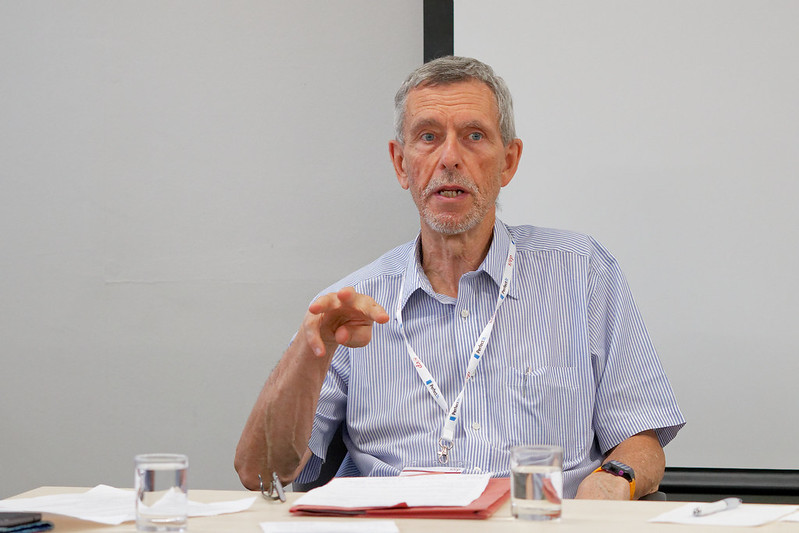
Paul Beverley at the 2019 SfEP conference, photo courtesy of CIEP.
On 9 July, Word macro man Paul Beverley initiated a handful of participants into the magic of macros, those nifty automated operations tools in Word that are created using the Visual Basic programming language. Paul has developed over 800 of these over the years, and has generously shared them with the editing community. Macros can automate a number of actions that editors need to perform on a regular basis, and they can save you hours of time and free up brainpower that can then be used to focus on the content of the text itself, instead of on technicalities and consistency issues.
Paul’s workshop, titled ‘Macros by the tourist route’, was aimed at absolute beginners and was intended to teach us how to essentially copy and paste Paul’s code into Word’s Visual Basic editor. The beauty of this is that no programming skills or very advanced technical skills are required; anyone can benefit from the power of macros if they learn how to copy and paste Paul’s code into Word.
We began by discussing our various operating systems, Word versions and experiences with macros. Once Paul had obtained an idea of our capabilities and experience and explained the basics of macros to us, he asked us to open a Word document he had sent us a download link to in advance.The documents contain step-by-step instructions with screenshots. I found them to be incredibly clear and helpful.
By following the steps in these documents, which are freely available to everyone in both a Windows and a Mac version, we learned how to record a basic macro and how to open Word’s Visual Basic editor. We then copied and pasted macro code into the editor, and tested our new macro. We also learned how to assign a keystroke to it, so we could execute the macro quickly.
Next, Paul explained where we could find the text of other macros (on his website) and let us carry out the rest of the steps in the instruction document. I learned how to install a macro that fetches Paul’s macros in one click by just typing their name into Word, which was pretty cool. We also learned how to install some of Paul’s popular macros, DocAlyse, ProperNounAlyse, and other information-based tools. These analyse a document without making any changes.
Paul then briefly introduced macros that belong to the ‘global change’ tools category, including his powerful FRedit macro. This is a global, advanced find-and-replace macro that is incredibly useful but also a bit trickier to learn how to use. However, the information-based macros are already incredibly useful, and I’ve really benefited from using a number of them already. A client of mine, for example, wanted to provide a glossary of Arabic terms at the end of her manuscript. We had italicized Arabic terms throughout the document, so I used a macro called ‘ItalicWordList’ to provide her with a list of all italic terms in the document. While I had also kept a style sheet of these terms, the macro took only a few seconds to provide a list of all italic terms against which the style sheet could be checked for completeness.
If anyone is interested in learning more about macros, Paul’s website and YouTube channel are good places to start.
For more CPD opportunities, check out the SENSE Professional Development Days, on 18 and 25 September. This year's programme is all about horizontal knowledge-sharing and learning from your peers throughout your career. Topics include digital nomadism, the linguistics of wine, branding to money management, balancing multiple niches, collaborative translation, intercultural communication, the SENSE mentoring programme, and battling imposter’s syndrome. TTickets are €25 for members and €40 for non-members, and grant access to both days. Click here to read about the benefits of joining the Society!
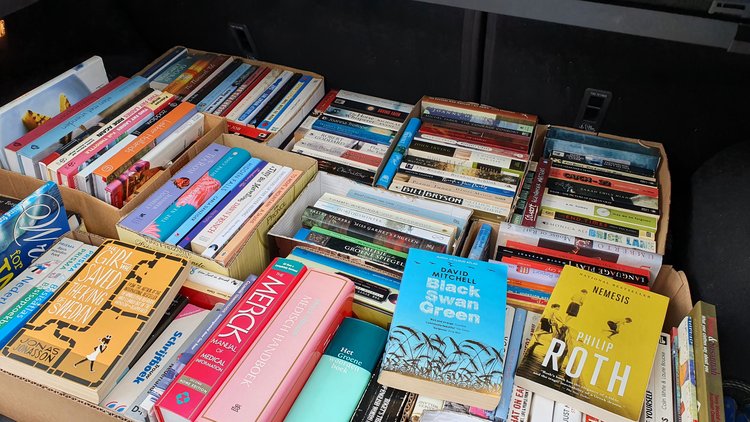
The Utrecht SIG held its first in-person meeting for more than 18 months on Wednesday 14 July. Besides being a corona-proof socially-distanced affair, it was gezellig and convivial, and ‘voor herhaling vatbaar’. We met in the car park at Theehuis Rhijnauwen, where we chatted and swapped notes as well as books. Some had a whole car boot full and others, who had come by bike, had brought just a few. Many books found new owners and everyone took something new to read home with them.
We then proceeded to the restaurant, where we could all sit together at a large table outside. After delicious pancakes and scrumptious desserts...
 |
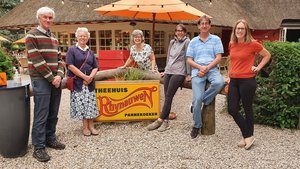 |
...some of us walked around the park, recording our daily Ommetje. (If you'd like to join the SENSE walking team challenge, simply download the app and join using the team code LAEFG.)
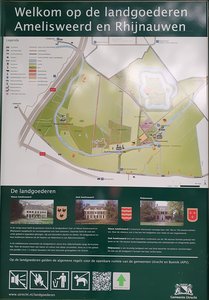 |
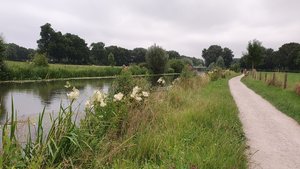 |
The next Utrecht SIG meeting is planned for 8 September. Keep an eye on the event calendar for details.

On 25 June, 23 UniSIG members gathered online to listen to SENSE member Jacqueline Evans (Jae) talk about how she provides writing support to PhD students at the University of Twente (UT). Naturally, as academic editors who work a lot with PhD students, we were all very interested to hear what Jae had to say.
The UT Language Centre (UTLC) offers a range of support to its students, including language lessons, writing courses, writing support and academic skills support. Jae offers support with and gives feedback on conference presentations, scientific posters, PhD theses, journal articles, cover letters, rebuttal letters, grant proposals and CV writing. Sounds like she has her hands full!
When a student approaches Jae with a text, she first encourages them to analyse their own writing and to define what they need help with. Most people are looking for a language check with feedback on structure, flow and coherence (ie, whatever it takes to make the text fit for purpose!). Jae emphasized that her interventions are more educational edits rather than full scientific edits. What does that mean? It means that Jae offers suggestions to help the author address any important gaps or illogical structures in their writing. Jae will correct language issues wherever possible, but the student will usually not receive a fully edited paper – the result will be a mixture of edits with suggestions on how they can improve their text. In short, they still have to do much of the work themselves, rather than receiving a ready-to-submit text.
However, Jae emphasized that the definition of providing editing for ‘educational’ purposes is often blurred, especially when a student is preparing a research paper for submission to a journal. Jae also edits research papers for her own research clients and knowing where to draw the line when working with students can be tricky!
Jae observed that, interestingly, requests to the UTLC for writing support have increased tenfold since the start of the Covid-19 pandemic. This may be because, instead of meeting face to face, students now reach out by email and receive their support online. Some students may feel more comfortable asking for help in this way. It will be interesting to see what happens to Jae’s workload as the university opens up and face to face meetings are allowed again: will she continue to offer her services online or will the students be keen to meet in person again?
Requests for writing support may also have increased during the pandemic because students have had a lot more time to work on their writing, since lab access was restricted. This mirrors the dramatic increase in workload that many academic editors have seen in the last year: their clients were no longer allowed in the lab and suddenly had plenty of time to write up their research. What will happen now that scientists are being allowed back in the lab; will we now see a lull in editing requests as our clients return to the lab to collect new data?
Jae concluded her talk by outlining what the future looks like for the UTLC. As more and more users are asking for a full editorial service, the UTLC may decide to offer this in the future. Indeed, the UTLC has already gathered a team of editors to work on Veni and ERC grant proposals for the university (funded by the Twente Graduate School). Jae has promised to keep us updated: keep your eye on the SENSE blog for new developments!

On 28 June, 11 participants gathered online to learn more about how to use Word Styles from language practitioner and Professional Editors Guild member, Monica Bosman.
The workshop kicked off with an introduction to Word Styles. Monica explained what styles are and how they can be used. She showed us where to find styles in the Word workspace, explained the different types of style, discussed the advantages of styles and explained how they can make us more efficient editors. After the break, Monica gave a practical demonstration of Word Styles, using a document she had sent to us before the workshop started. This was useful, because it meant we could try out for ourselves everything Monica was showing us.
I knew a bit about Word Styles before the workshop. For example, I had used the navigation pane to skip easily between sections when writing larger documents. But I usually work with shorter texts (journal articles mainly) and was not using styles regularly in my editing work. Monica’s clear step-by-step introduction to using styles showed me how I can make my daily work more efficient. For example, styles allow you to make many changes at once, ensuring consistent formatting of headings, paragraphs and numbered lists. You can also automatically generate a table of contents based on the heading styles and outline levels in your document.
Monica also talked us through how we can use styles to diagnose problems in a text that we have received for editing. Opening the Styles panel and seeing which styles the author has used in the document can give you an idea of what formatting changes you may need to make: simply click the ‘Options’ button in the bottom right corner of the Styles menu and choose what to show in the Styles panel. She also showed us some useful tips and shortcuts, such as how to use the Format Painter function to copy formatting from one section and apply it to another, how to use Advanced Find to find and replace a style, as well as how to use Manage Styles to import styles from another document.
All in all, this was a full and interactive workshop, packed with useful tips on how to work more efficiently with Word. Well worth the investment of time and money! Thank you to SENSE for organizing the workshop and a big thank you to Monica for sharing her expertise so generously!

With temperatures heading towards 33oC, the theme of the June Southern SIG meeting was the summer season.
We started by discussing ways to keep cool in the office on hot summer days. One member recommended using an air humidifier – which adds moisture to the air – rather than a fan. By keeping the office cooler, he immediately added five working hours to his week, quickly recouping the investment. Another handy tip was the budget option of hanging a wet towel in front of a fan, also very effective!
Workflow over the summer seems to be somewhat unpredictable for most of us. While we may know our direct clients’ plans, workflow from agencies seems to vary from year to year. During some summers, agencies have a surplus of work – perhaps because many of their other freelancers are away on holiday – so we may find ourselves in demand, whereas in other years there could be a lull as the agencies’ clients also take a break. Summer peaks and troughs are not exclusive to freelancers; in-house editors and translators may also find themselves surprisingly busy over the summer period.
All this makes deciding when to go on holiday tricky. Do you book your holiday for the summer, after the summer, or even in January? The consensus was that there is no best time. Just like the summer months, January may be quiet one year, but crammed full the next. The discussion then moved on to the problem of clearing your desk before going away – why does it always take so long? And what can we do about it? Suggestions included trying to set ourselves false deadlines or even scheduling a day off before going away to ensure that we arrive at our holiday destination ready to enjoy our break.
Regardless of the timing, we all agreed on the importance of taking a break – whether it be a two-week holiday or a few long weekends – and not working too many weekends or late nights in a row. The months can fly by and you can suddenly find that it is halfway through the year and you have only had a couple of days off.
Other items discussed included how to keep up your English when living abroad – listen to Radio 4 and do the quick crossword in the Guardian – and the relatively new problem of how to politely stop someone from talking too long on a Zoom call!
Last, but certainly not least, the new Southern SIG member of the month (the attendee located farthest south) was appointed and this time it was none other than our convener himself! Congratulations, Jasper!